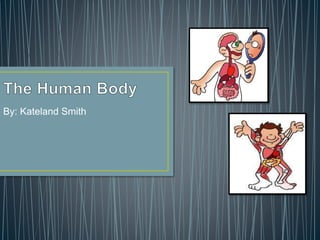
The Human Body
- 2. Teaching three primary systems (Digestive, Muscular, and Skeletal) and their functions to a 5th grade classroom, 11 boys, 13 girls, 70% Caucasian, 25% African-American, and 5% Hispanic. 4 students in the class have mild to moderate ADHD.
- 3. My 5th grade students will comprehend the major functions and systems of the human body after using blogs, reviewing posters, KWL charts, videos, and QR codes by the end of the day with 80% accuracy.
- 4. Day 1: To start out, students will learn what are organs? What are their functions? Students will be introduced to the systems of the body such as: Skeletal, Muscular, and Digestive. Day 2: Students will learn the 1st major system of the body, Skeletal. What are bones? What is their role? Day 3: Students will review the 2nd major system of the human body, Digestive. What is the function of our digestive system? What are the significant organs?
- 5. Day 4: Students will identify the 3rd major system of the body, Muscular. What is our muscles primary function? What are the three types of muscles? How do they work? Day 5: Students will review the three systems discussed: Muscular, Skeletal, Digestive. Recap what are organs? What are muscles? In what ways do our bones help support the body?
- 6. YouTube: Sing songs and watch videos, such as “Learn the Bones” Windows Movie Maker: Students will be placed in groups of 3-4. They will use WebQuests as an inspiration to create their own presentation. iPad: Interactive games on websites, such as www.edheads.org PowerPoint: Students will research a specific disease dealing with the human body in groups of 2 and create a presentation using PowerPoint.
- 7. Voki: Students will use voki at he the beginning of class for the daily bell ringer. Podcast: At the end of the week, students will create a podcast describing what knowledge they have gained about the human body. QR Code: Students will create a QR code to link a website. WebQuest: Students will complete a WebQuest in small groups of 3-4. Glogster/Poster: A poster will be displayed on the SmartBoard for students to interact.
- 8. Taylor, T. (2012, October). In InnerBody: Human Anatomy. Retrieved September 22, 2014 Amsel, S. (n.d.). In Body Tissues and Body Systems. Retrieved September 18, 2014 (2008, March 4). In The Visible Body . Retrieved September 21, 2014